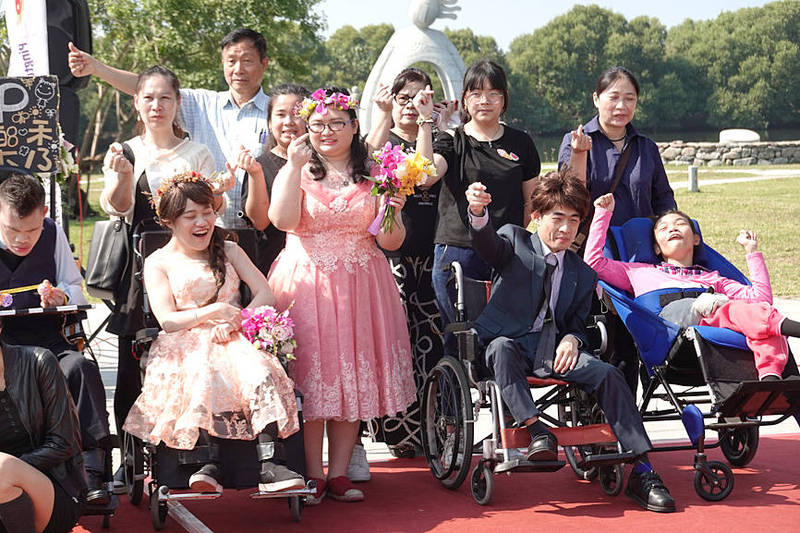《TAIPEI TIMES》 Robots among TMUH’s cerebral palsy treatments

People with cerebral palsy attend a red-carpet event held by the Pingtung Cerbral Palsy Association in Pingtung County on March 5. Photo: CNA
MACHINE THERAPY: Robotic assistive rehabilitation uses augmented and virtual reality to give people real-time feedback to practice at their own pace, the hospital said
By Lee I-chia / Staff reporter
Taipei Medical University Hospital (TMUH) yesterday showcased new treatments for cerebral palsy, including using robots to assist children with limb rehabilitation, which it says helps improve walking speed and grip strength.
TMUH superintendent Chiou Jeng-fong (邱仲?) said that cerebral palsy is one of the most common causes of childhood disabilities, and the hospital is seeking early intervention strategies.
It has a specialized interdisciplinary team, including pediatricians, neurosurgeons and physiatrists, aiming to improve the motor ability of children with cerebral palsy.
Its seminar at the hospital was designed to help the public and parents of children with cerebral palsy understand some of the new treatment methods for the disorder, including the use of upper or lower limb rehabilitation robots, botulinum toxin injections, regenerative medicine and holistic healthcare.
TMUH vice superintendent Tseng Sung-Hui (曾頌惠), an attending physician at the hospital’s rehabilitation department, said that from 2012 to December last year, the hospital treated 311 children with cerebral palsy, accounting for about 7 percent of people with the disorder in the nation.
Last year, robotic assistive rehabilitation devices were used for upper or lower limb rehabilitation of children with cerebral palsy in 325 therapy sessions, and the children all showed significant improvement in their walking ability and speed, or grip strength, she said.
The robotic assistive rehabilitation system uses a body weight support device for a person with cerebral palsy to practice balance and gait training on a treadmill. It also has sensors, and augmented and virtual reality instruments for real-time feedback, allowing the person to relearn and practice walking at their own pace during rehabilitation after surgery, the hospital said.
The therapy sessions not only help children regain functional movement so they can attend school activities and finish homework assignments, but also helps them regain confidence in social situations and improves the living quality of their families, Tseng said.
As the UN Convention on the Rights of Persons with Disabilities and Convention on the Rights of the Child stress the importance of enabling people with disabilities to participate fully in all aspects of life and for their rights to be heard, the hospital has asked people with the disorder, their families and service providers to document their social participation stories in videos to share with others.
新聞來源:TAIPEI TIMES














